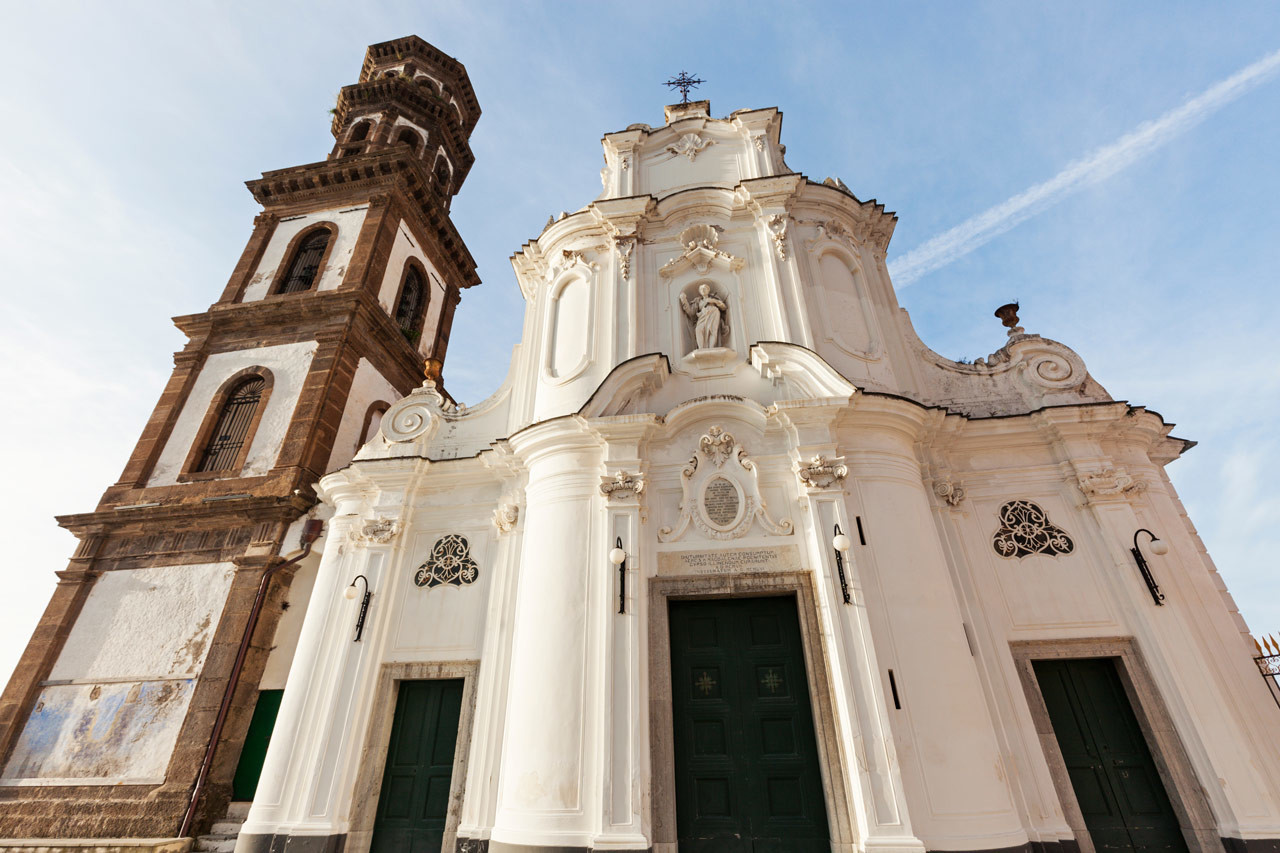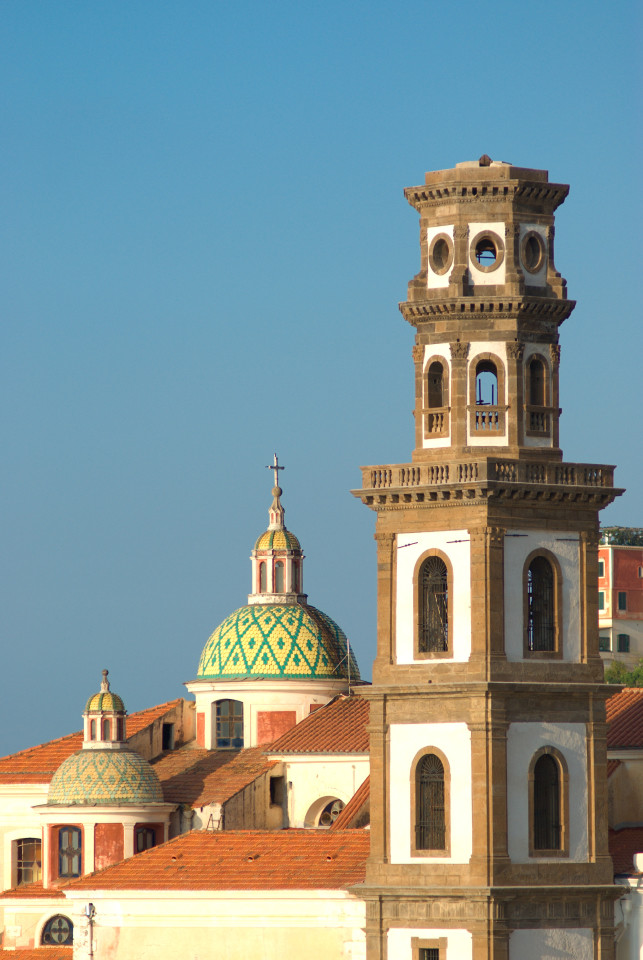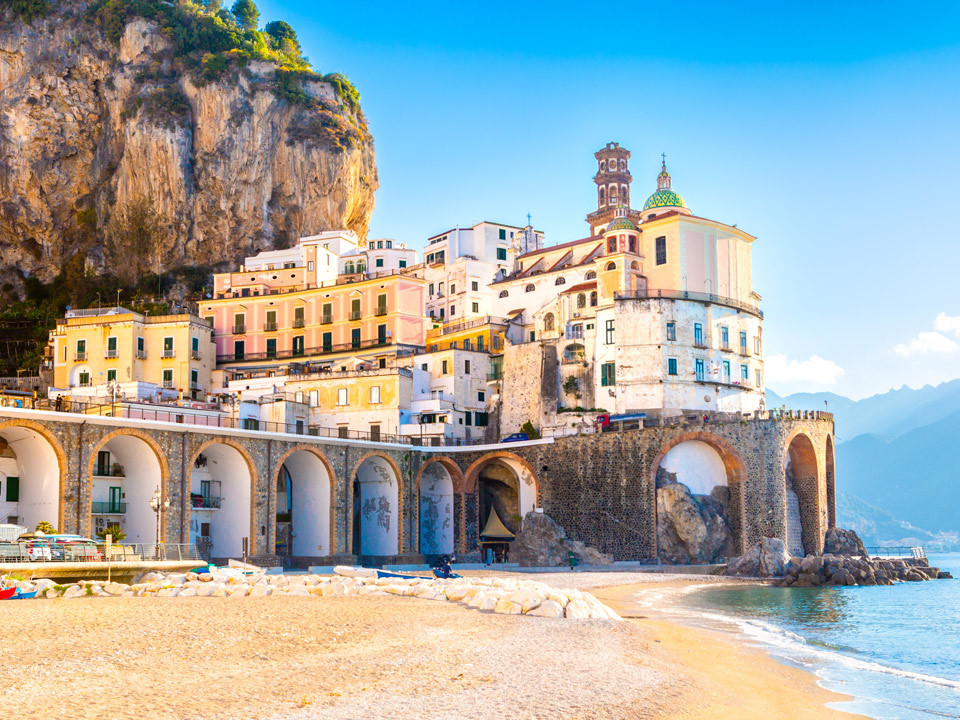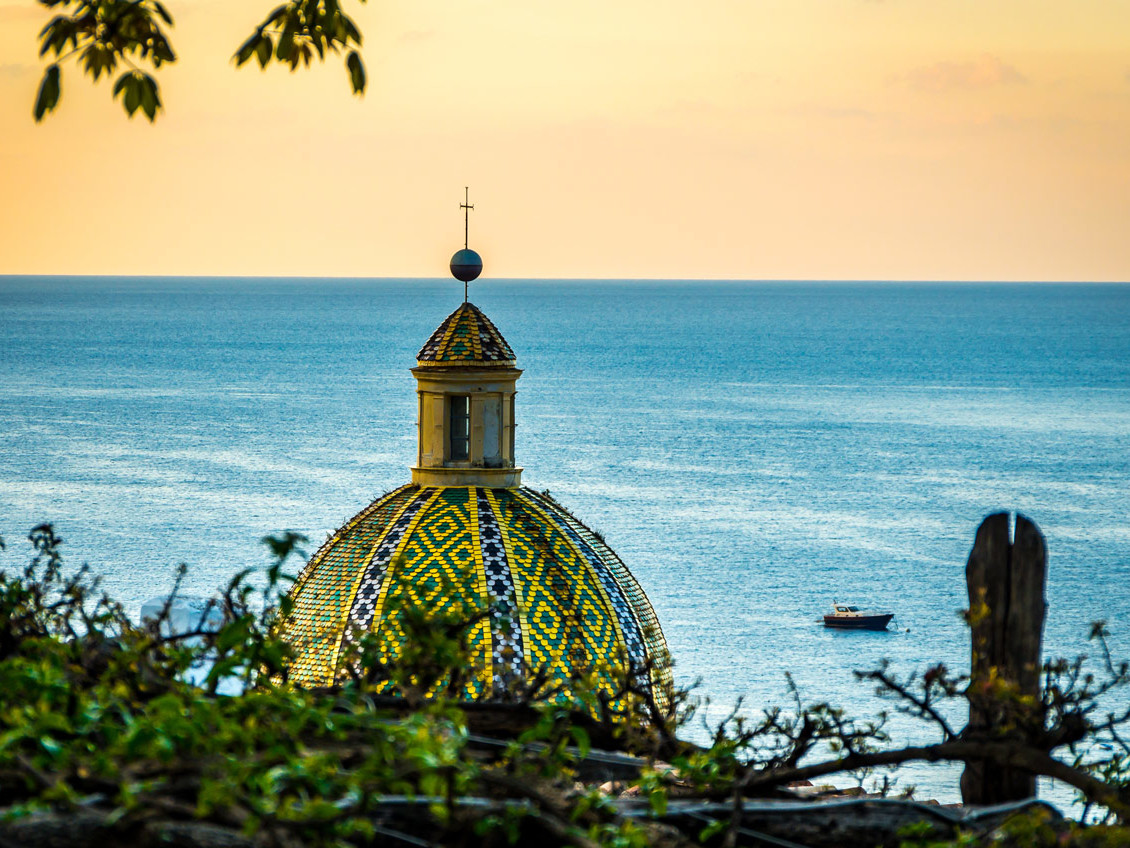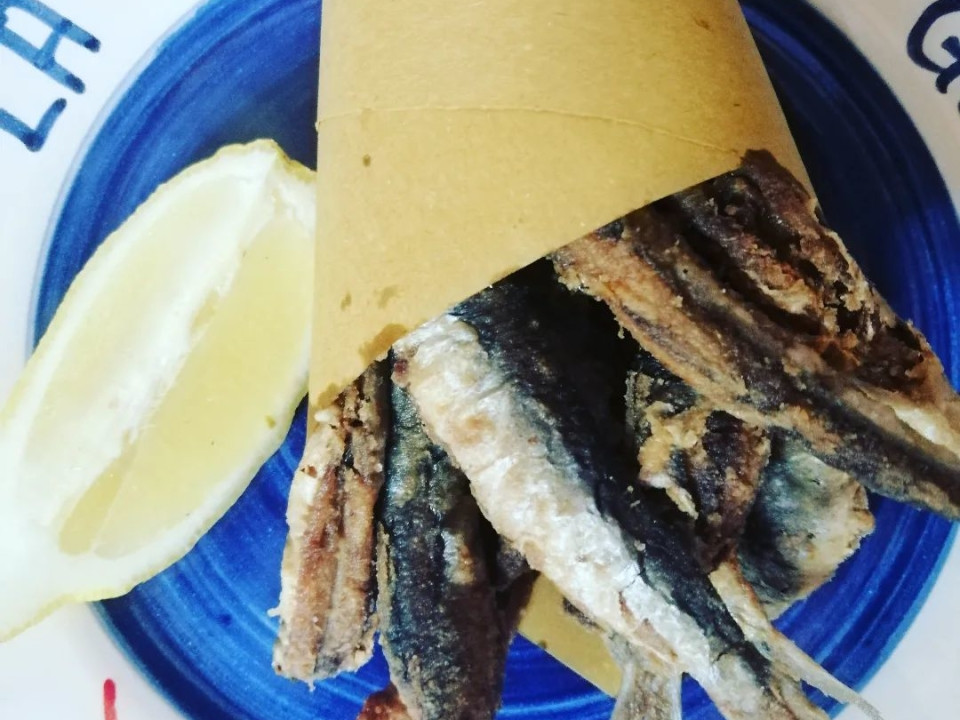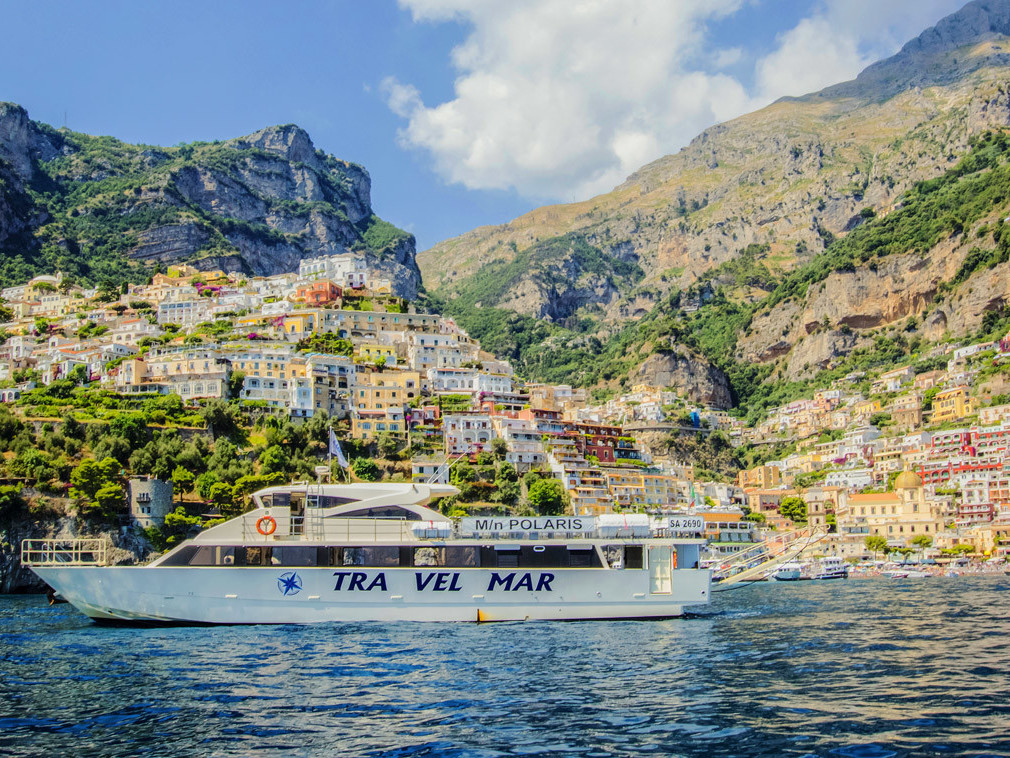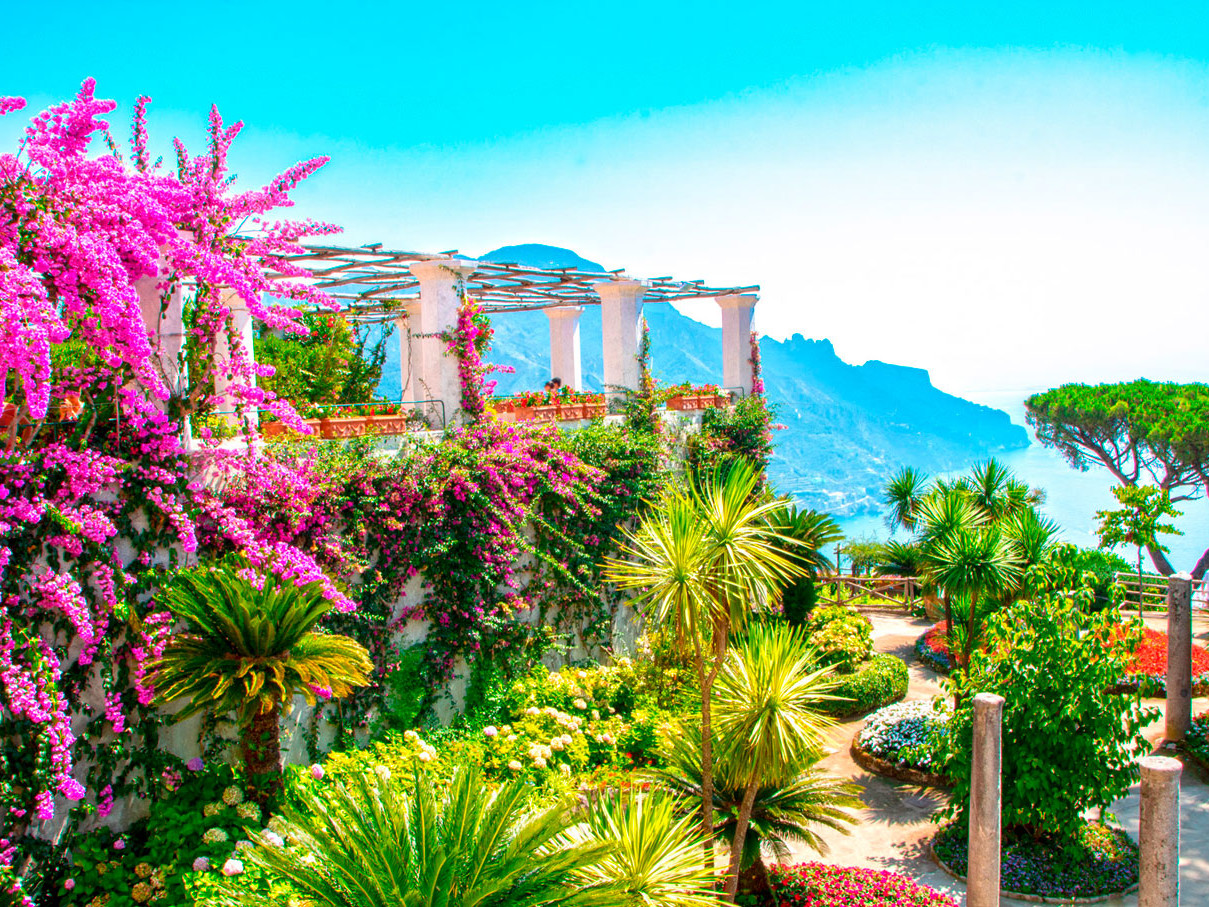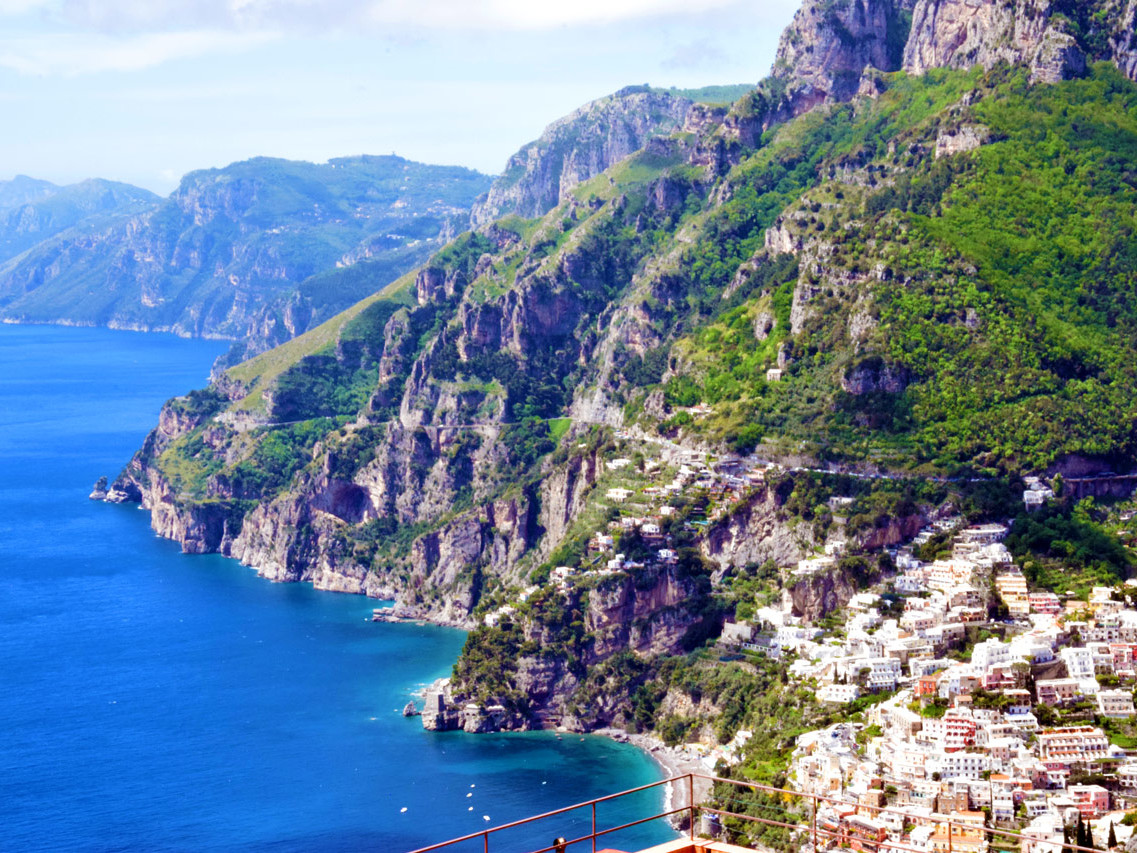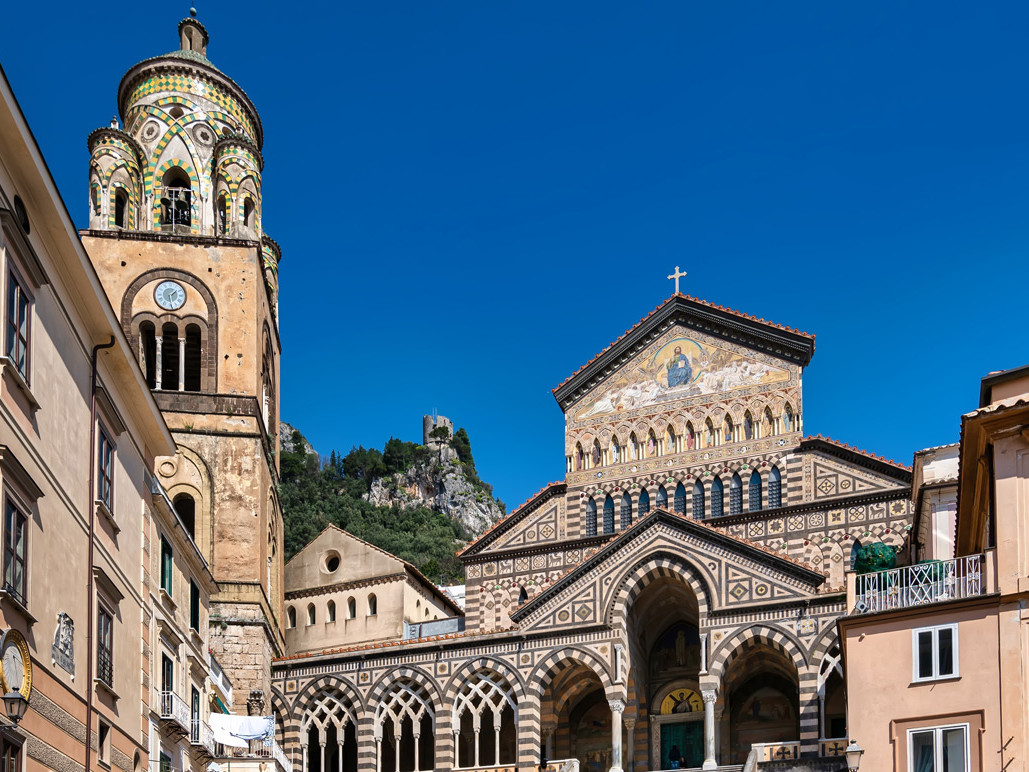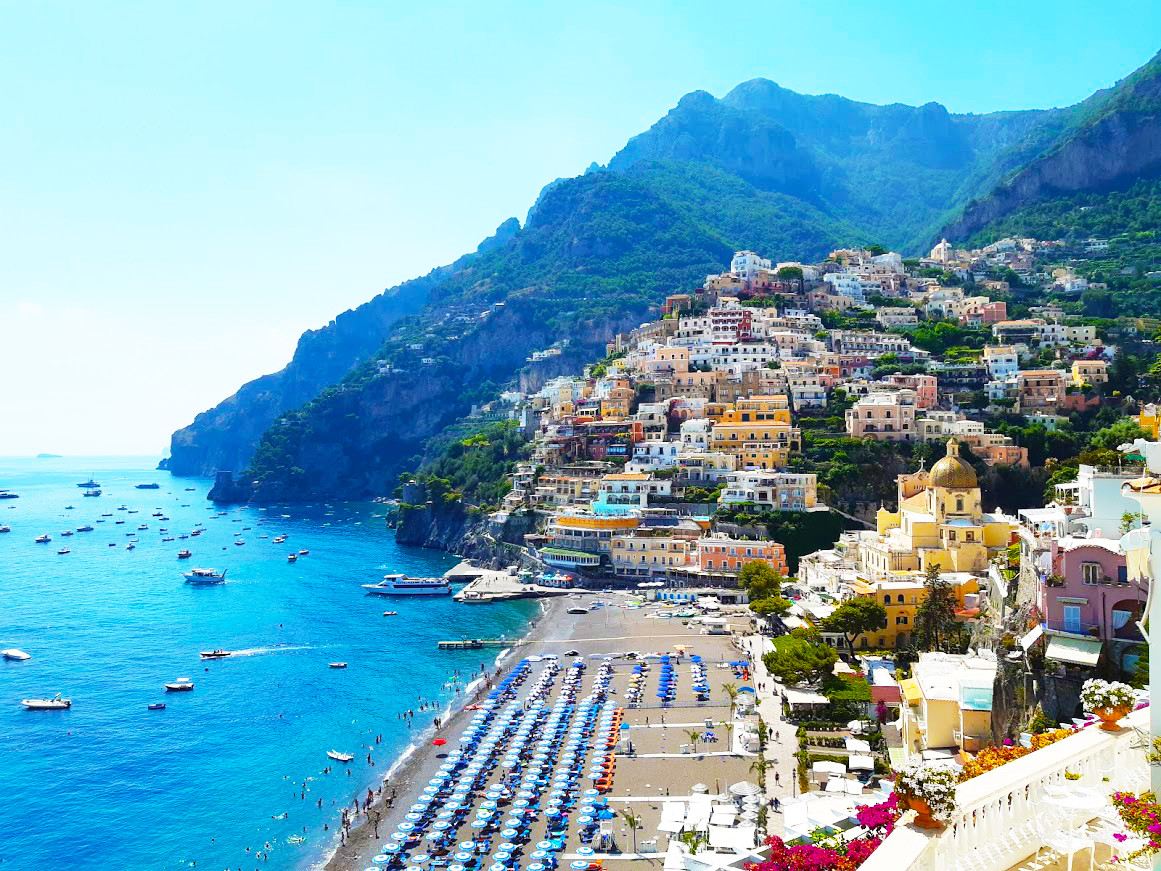THE COLLEGIATE CHURCH OF SANTA MARIA MADDALENA: THE GEM OF ATRANI
In Atrani, which at 0.1206 sq. km. is the smallest municipality in Italy, is the only example of the Rococo style on the Amalfi Coast. It is the church of S. Maria Maddalena, built by the people of Atrani to thank the saint who had freed them from Saracen occupation.
by Roberta Cascone
The Church of Santa Maria Maddalena in Atrani was built in 1274 in a very picturesque location, right in front of the sea, on the remains of an ancient watchtower that was incorporated into the transept area. The cult of the saint had spread, however, as early as the 12th century, when the Atranesi clashed with a handful of mercenary sailors sent by Manfred the Norman, who intended to punish them for siding with the pope in the struggle between papacy and empire. In fact, the church was erected precisely to honor and thank the Saint, who had liberated the city from foreign occupation. Over the centuries it underwent many renovations and became a Collegiate Church in 1706 by decision of Pope Clement XI.
share this article
Santa Maria Maddalena Church in Atrani
The church and its beauties
The Collegiate Church has a long history of restoration and alterations: already in 1570, in a precarious and degraded condition, it was restored with funds raised by the people of Atrani themselves. Later, in 1753, it underwent extension work and assumed its present three-aisled structure: on this occasion the last remains of the old fort disappeared altogether. Finally, in 1852, it was remodeled by architect Lorenzo Casalbore of Salerno. The church's facade, with its soft lines and relief stucco work, is considered the only example of Rococo on the Amalfi Coast. It is divided into two parts by capitals and columns, and in the upper part is a statue of the patron saint.
The church also has a tiled dome and an elegant 16th-century brown tuff bell tower with a square plan and two-story octagonal belfry. The interior has a three-aisle plan, separated from each other by polychrome marble pillars. A number of chapels open in the smaller naves, including two of particular importance: the Chapel of the Sacrament on the left and the chapel of a noble Atranese family, where the work "The Incredulity of Thomas" by Andrea Sabatini, can be admired. The nave roof is barrel-vaulted with side lunettes decorated with stucco floral motifs. The altar is made of marble and dates back to the 1700s; it is covered by a flat ceiling where the painting of Christ's appearance to Magdalene is placed. Moreover, on the altar are three wooden altarpieces by Maiori-based painter D'Amato: St. Mary Magdalene is depicted in the center, while St. Andrew and St. Sebastian are on the sides.
The rediscovered treasures
The Celebration Committee of the Church of St. Mary Magdalene reopened after many years an armored cabinet that had been inside, thus bringing back sacred and valuable objects, including the Holy Relics of the Patroness.
After painstaking research and studies in the Collegiate Historical Archives, attestations of the authenticity of the artifacts were also recovered, which is why today some strands of hair, bone remains, shreds of the Robe and a fragment of the Cross of Jesus are on public display. Also of great impact was the discovery of a three-act Lyric Opera in three acts, considered lost for centuries, entitled "From the Death to the Life of Mary Magdalene" which was commissioned by the people of Atrani to the musician Leonardo Leo. In the present day, the collegiate church of St. Mary Magdalene remains an important landmark for the people of Atrani, who celebrate the saint on July 22 each year with great festivities and the traditional procession of her statue.
- On the feast of Atrani's patron saint, July 22, sarchiapone, a long green pumpkin stuffed with meat and cheese and baked in the oven, is prepared.
- The church is open during church services, or one must ask to visit the sacristan by knocking at the rectory house. In summer, volunteers keep the church open during peak visitor hours.
fun facts
share this article


